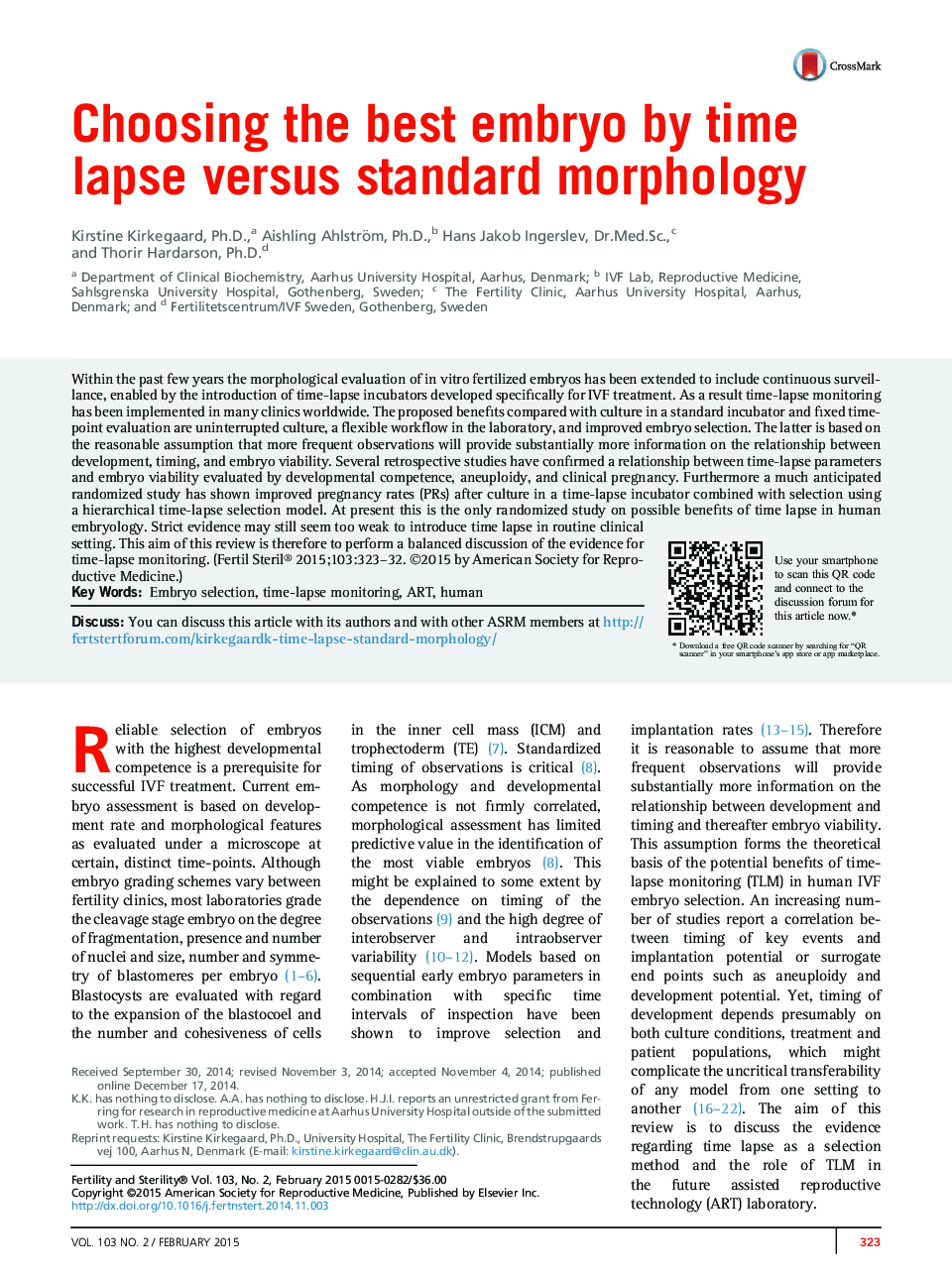| Article ID | Journal | Published Year | Pages | File Type |
|---|---|---|---|---|
| 6179997 | Fertility and Sterility | 2015 | 10 Pages |
Within the past few years the morphological evaluation of in vitro fertilized embryos has been extended to include continuous surveillance, enabled by the introduction of time-lapse incubators developed specifically for IVF treatment. As a result time-lapse monitoring has been implemented in many clinics worldwide. The proposed benefits compared with culture in a standard incubator and fixed time-point evaluation are uninterrupted culture, a flexible workflow in the laboratory, and improved embryo selection. The latter is based on the reasonable assumption that more frequent observations will provide substantially more information on the relationship between development, timing, and embryo viability. Several retrospective studies have confirmed a relationship between time-lapse parameters and embryo viability evaluated by developmental competence, aneuploidy, and clinical pregnancy. Furthermore a much anticipated randomized study has shown improved pregnancy rates (PRs) after culture in a time-lapse incubator combined with selection using a hierarchical time-lapse selection model. At present this is the only randomized study on possible benefits of time lapse in human embryology. Strict evidence may still seem too weak to introduce time lapse in routine clinical setting. This aim of this review is therefore to perform a balanced discussion of the evidence for time-lapse monitoring.
